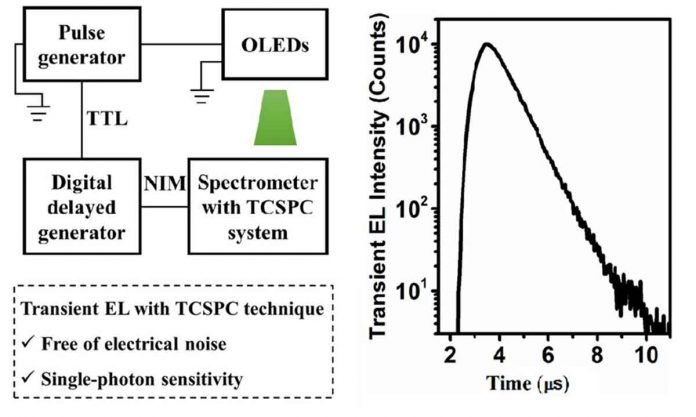Time‑correlated single‑photon counting (TCSPC) technique is a powerful way to measure the weak light signals. The basic principle behind TCSPC is the photoelectric effect in which an electrical charge is released by absorbing a photon. The TCSPC technique counts the single electron pulse created by single photons, compared to the traditional strategy of detecting analog photogenerated voltage. This means its sensitivity can be up to single-photon level as its name implies. The TCSPC technique has been successfully employed to detect the transient/burst photoluminescence (PL) in many research fields. The transient spectrometer is common equipment in many labs.
Dr. Xianfeng Qiao and Prof. Dongge Ma at South China University of Technology (SCUT) are interested in device physics of organic optoelectronics/spintronics devices. They pay attention to both transient PL and electroluminescence (EL) profiles. This together provide a wealth of information about how devices work.
So, they improved their spectrograph and combined it with a pulse generator. This improvement enables their transient spectrometer to record both transient PL and EL signals. Energy transfer mechanisms and exciton evolution in organic light emitting diodes could be investigated in-situ, with this improved spectrometer. The researchers also proved that the superior sensitivity of TCSPC technique is helpful for extracting mobility. Detailed information could be found in Frontiers of Optoelectronics. This work will inspire those who want to measure weak pulse EL with a transient spectrometer. A simple and cost-effective solution is provided in this work.

